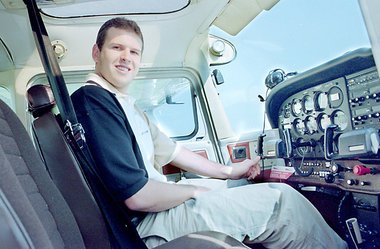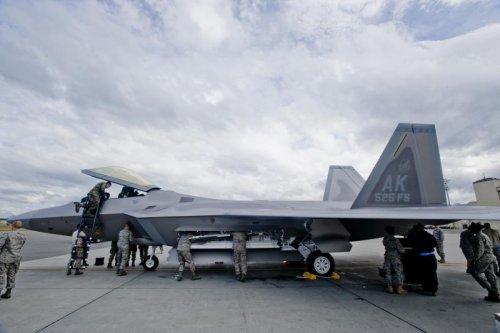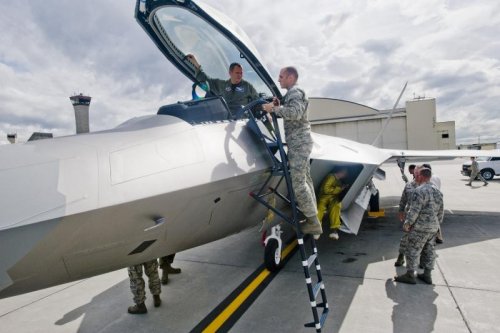The US Department of Defense (DOD) inspector general (IG) has found that the conclusions of an US Air Force Accident Investigation Board (AIB) report into the fatal 16 November, 2010, crash of a Lockheed Martin F-22 Raptor are not supported by the facts. The crash took the life of Capt Jeff Haney, a pilot assigned to the 525th Fighter Squadron based at Joint Base Elmendorf-Richardson, Alaska.
"We concluded that the AIB Statement of Opinion regarding the cause of the mishap was not supported by the facts within the AIB report consistent with the clear and convincing standard of proof established by AFI 51-503," writes Randolph Stone, the Pentagon's deputy inspector general in a memo attached to the report. "Our conclusion was supported by five individual findings, and we recommended that the AIB report be reevaluated in light of our findings."
The original AIB report issued in December 2011 concluded that even though the Raptor's life support systems had shut down, and the emergency oxygen system was difficult to use, that the crash was Haney's fault because he had not acted quickly enough to save himself. The AIB was chaired by Brig Gen James Browne who wrote in the report: "I find the cause of the mishap was the MP's [mishap pilot] failure to recognize and initiate a timely dive recovery due to channelized attention, breakdown of visual scan and unrecognized spatial disorientation."
The inspector general found that while the AIB report cites channelized attention, breakdown of visual scan, and unrecognized spatial disorientation as the cause of the F-22 mishap, the factors are separate, distinct, and conflicting. "The AIB report does not clearly explain their interrelationship and how it is possible that all three factors concurrently caused the mishap," the IG report reads.
The inspector general also questions the AIB's determination that Haney's oxygen mask was in the full up position during the sequence of events leading up the accident. "This determination directly affected several conclusions of the AIB and precluded the analysis of other potential causes of the mishap," the IG report reads.
The AIB also failed to adequately analyze the various human factors it listed as non-contributory. "The AIB report's Non-Contributory portion of the Human Factors section inadequately analyzes the human factors listed, such as hypoxia, gravity-induced loss of consciousness, and sudden incapacitation and does not contain any references and/or supporting documentation. Without detailed analysis and proper documentation, it is unclear how the AIB determined that these factors did not contribute to the mishap," the IG report reads. "The AIB report lacked detailed analysis of several areas, such as the Emergency Oxygen System activation as well as the physiological reactions to lack of oxygen."
There were also numerous errors in the AIB report. "Of the 109 references in the AIB report's Summary of Facts, 60 of those references were either incorrect or did not direct the reader of the AIB report to the information cited in the paragraph," IG report notes.



